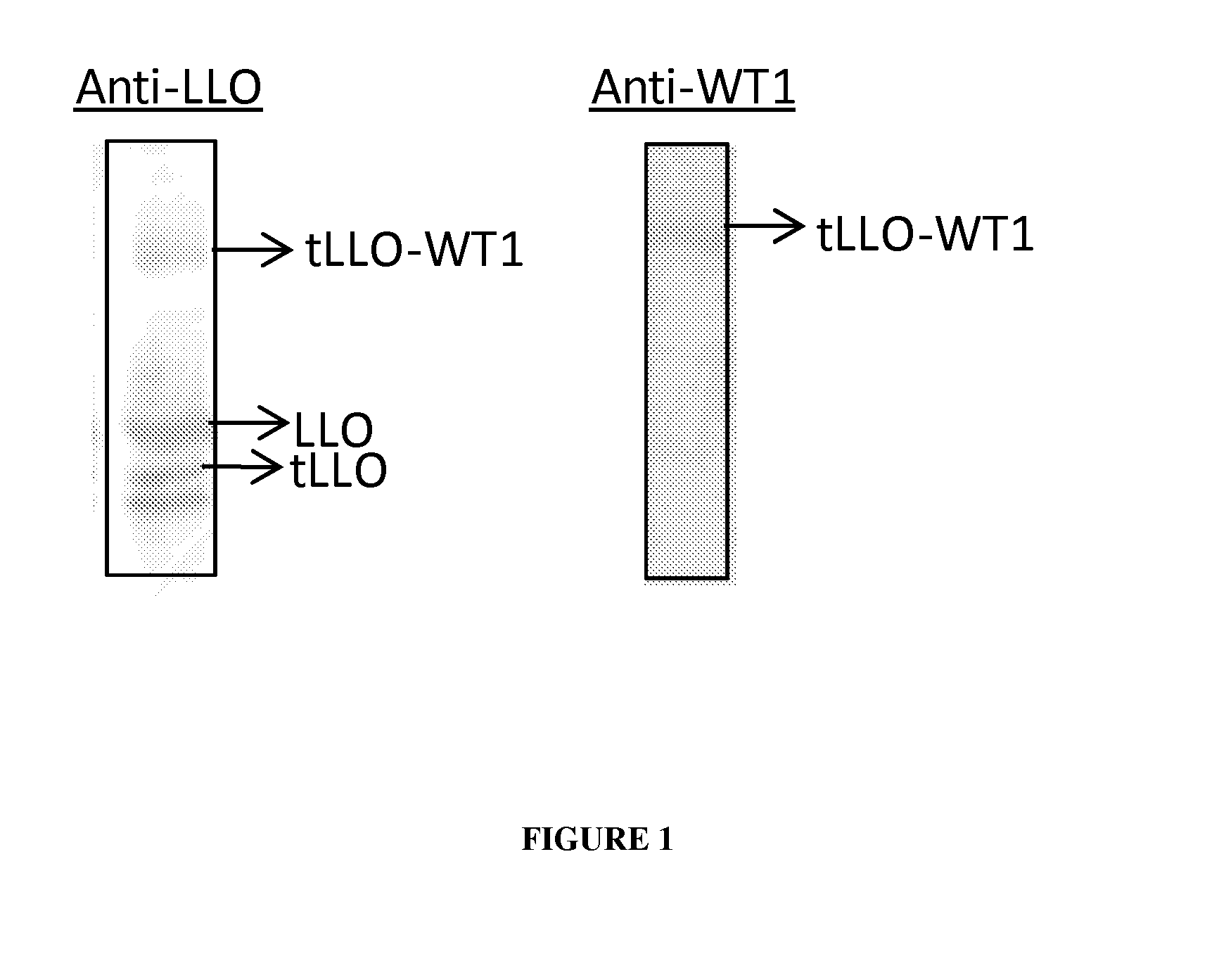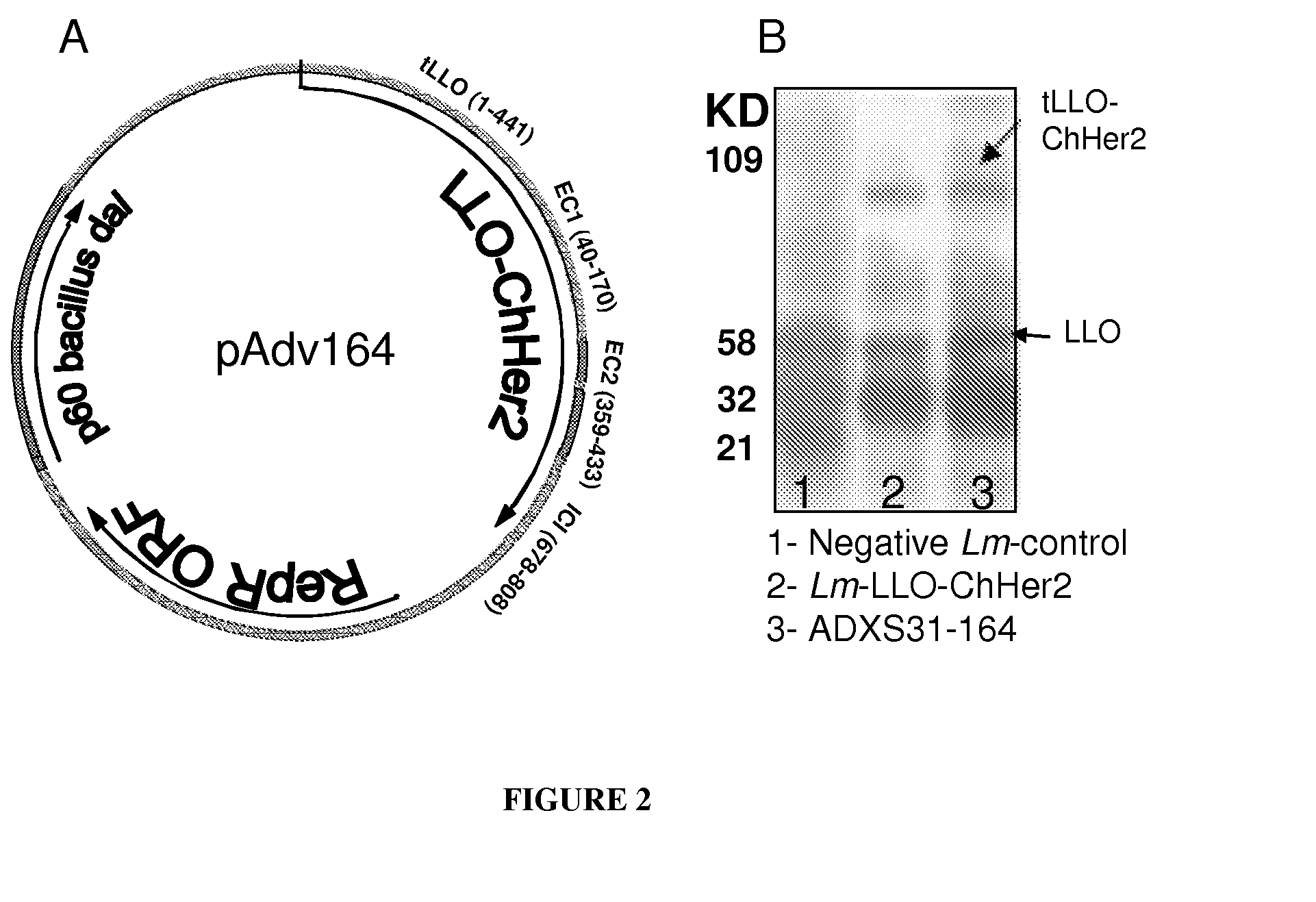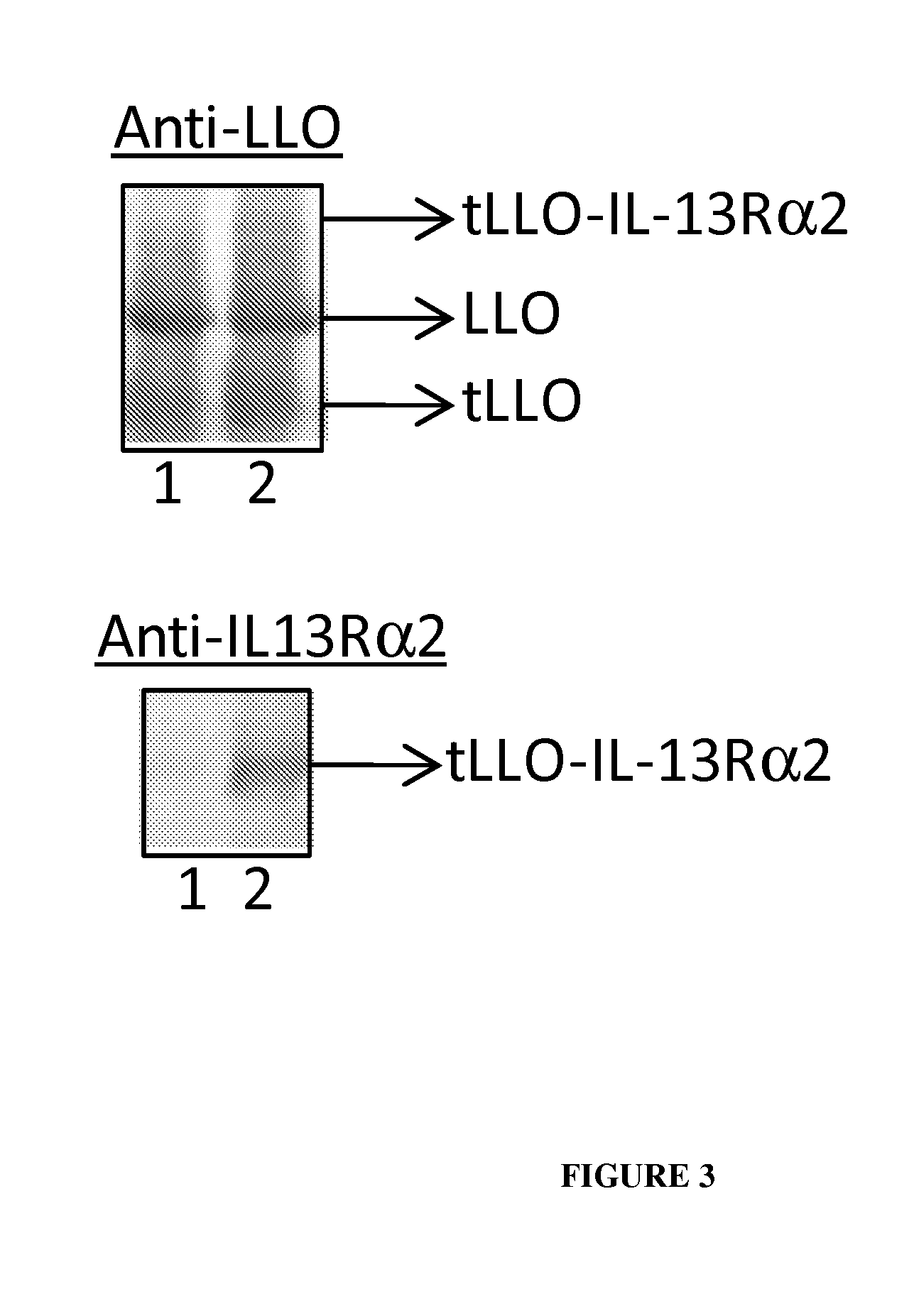Live listeria-based vaccines for central nervous system therapy
a listeria-based vaccine and central nervous system technology, applied in the direction of antibody medical ingredients, drug compositions, immunological disorders, etc., can solve the problems of lm into cells not allowing humoral immunity and opsonization to develop, the therapeutic effect is hindered, and the granulocyte depletion of the granulocyte is not able to survive lm administration
- Summary
- Abstract
- Description
- Claims
- Application Information
AI Technical Summary
Benefits of technology
Problems solved by technology
Method used
Image
Examples
example 1
Generation of L. monocytogenes Strains that Secrete LLO Fragments Fused to a Tumor Associated Antigen
Lm Based Construct Expressing Human WT1
[0249]Sequence of WT1 protein: Below is the sequence of WT1 spanning 185-517 amino acid residues cloned in Lm based plasmid. The regions in bold refer to epitopes specific for human HLA-A2 (bold) and HLA-A24 (italics).
(SEQ ID NO: 19)SQASSGQARMFPNAPYLPSCLESQPAIRNQGYSTVTFDQTPSYGHTPSHHAAQFPNHSFKHEDPMGQQGSLGEQQYSVPPPVYGCHTPTDSCTGSQALLLRTPYSSDNLYQMTSQLECMTWNQMNLGATLKGVAAGSSSSVKWTEGQSNHSTGYESDNHTTPILCGAQYRIHTHGVFRGIGDVRRVPGVAPTLVRSASETSEKRPFMCAYPGCNKRYFKLSHLQMHSRKHTGEKPYQCDFKDCERRFSRSDQLKRHQRRHTGVKPFQCKTCQRKFSRSDHLKTHTRTHTGKTSE KPFSCRWPSCQKKFARSDELVRHHNMHQRNMTKLQLAL
Construction of Listeria Based WT1 Vaccine (LmddA174):
[0250]The DNA segment corresponding to the 185-517 amino acid residues of the C-terminus region of human WT-1 gene was cloned Lm based shuttle vector resulting in the plasmid, pAdv174. The plasmid, pAdv174 was transformed in background s...
example 2
Immunogenicity of Constructed Strains
Immunogenicity of LmddA174 in HLA-A2 Transgenic Mice:
[0262]HLA-A2 transgenic mice (3 / gp) were immunized with 108 CFU of LmddA174 and Lovaxin C (Listeria control). These mice were boosted on day 14 and 7 days later spleens were harvested. The splenocytes from each group were stimulated in vitro for 7 days using 1 μM of WT1 peptide (RMFPNAPYL) (SEQ ID NO: 26) and 20 U / ml of IL-2 and examined for the induction of IFNγ using intracellular cytokine staining for IFNγ. After 7 days of in vitro stimulation, we observed that 3.17% of CD8+ CD62Llow cells were secreting IFNγ+ in the LmddA174 immunized splenocytes. This was 2 fold higher than the irrelevant Listeria (Lm-LLO-E7) group (FIG. 8). This suggests that LmddA174 construct elicited WT1 specific immune responses in HLA-A2 mice. Since the epitope used in this stimulation is shared by both HLA-A2 and H-2 Db, the elicited responses could not be attributed to a specific MHC haplotype.
IFN-γ Levels
[0263]The...
example 3
ADXS31-164 is as Immunogenic as Lm-LLO-ChHER2
[0264]Immunogenic properties of ADXS31-164 in generating anti-Her2 / neu specific cytotoxic T cells were compared to those of the Lm-LLO-ChHer2 vaccine in a standard CTL assay. Both vaccines elicited strong but comparable cytotoxic T cell responses toward Her2 / neu antigen expressed by 3T3 / neu target cells. Accordingly, mice immunized with a Listeria expressing only an intracellular fragment of Her2-fused to LLO showed lower lytic activity than the chimeras which contain more MHC class I epitopes. No CTL activity was detected in naïve animals or mice injected with the irrelevant Listeria vaccine (FIG. 10A). ADXS31-164 was also able to stimulate the secretion of IFN-γ by the splenocytes from wild type FVB / N mice (FIG. 10B). This was detected in the culture supernatants of these cells that were co-cultured with mitomycin C treated NT-2 cells, which express high levels of Her2 / neu antigen (FIG. 14C).
[0265]Proper processing and presentation of t...
PUM
| Property | Measurement | Unit |
|---|---|---|
| Strain point | aaaaa | aaaaa |
Abstract
Description
Claims
Application Information
 Login to View More
Login to View More - R&D
- Intellectual Property
- Life Sciences
- Materials
- Tech Scout
- Unparalleled Data Quality
- Higher Quality Content
- 60% Fewer Hallucinations
Browse by: Latest US Patents, China's latest patents, Technical Efficacy Thesaurus, Application Domain, Technology Topic, Popular Technical Reports.
© 2025 PatSnap. All rights reserved.Legal|Privacy policy|Modern Slavery Act Transparency Statement|Sitemap|About US| Contact US: help@patsnap.com



